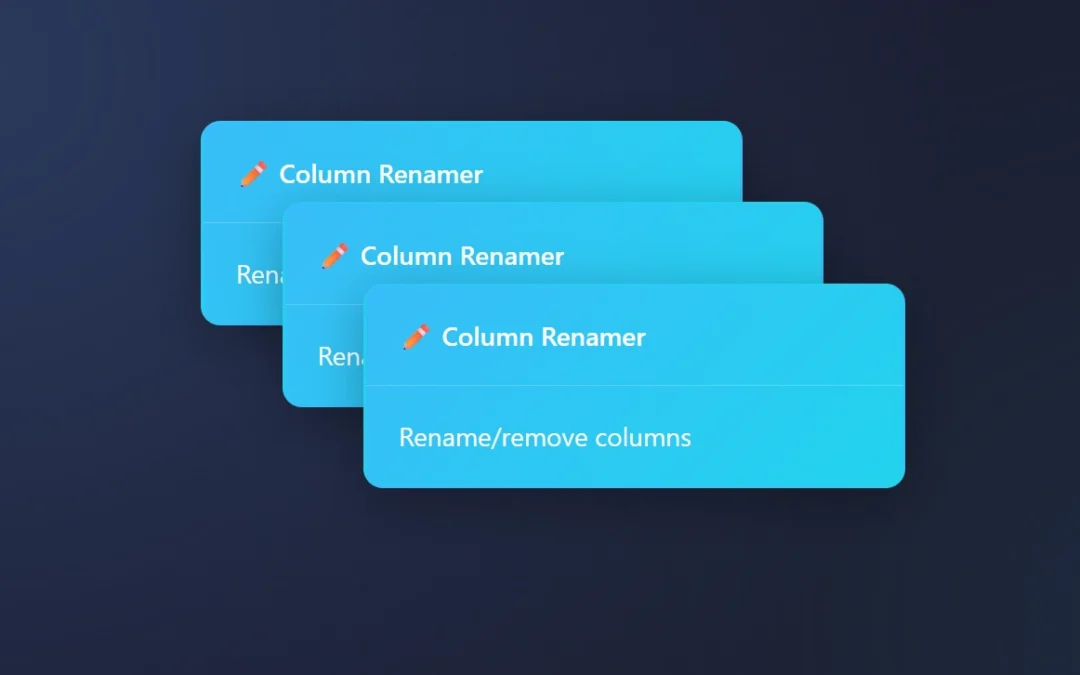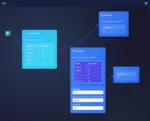Rename, remove, and reorder columns to standardize your schema and keep downstream tools happy.
The Column Renamer transforms header names and order. Based on the implementation in node/process/columnrenamer.js, it:
- Rename columns with a map like
{ oldName: "New Name" }. - Remove specific columns via a removal list.
- Reorder columns, preserving your custom sequence and appending new upstream columns.
- Outputs updated
processedDataandoutputHeaders, and tracksimpact.columnsfor moved/renamed fields.
renames, removals, columnOrder, and movedColumns.
Typical flow
Input ➜ Clean headers with Column Renamer ➜ Filter/Aggregate/Join ➜ Output
Use Column Renamer early—after ingestion—to standardize inconsistent headers (from CSVs, APIs, manual tables). This prevents schema drift and breaks in nodes that match on names.
- Trim/Normalize: normalize casing and whitespace before/after renaming for consistency.
- Column Filter / Any Column Filter: predictable names make filtering reliable.
- Duplicate Columns / Wild Headers: tame messy inputs, then finalize with a clean naming scheme.
- Joiner / Union: align schemas across datasets with a consistent header contract.
- Aggregate / Sort / Rank / Charts: downstream ops and chart configs depend on stable names.
Practice renaming, removing, and reordering headers. Changes update the preview below.
These pills are generated from the same mapping used by setupTutorialPills() in index.html to help readers discover more ET1 tools.
- Rename: for clarity and consistency (Customer ID ➜ customer_id).
- Remove: drop unused or sensitive fields before exporting.
- Reorder: put critical fields first for readability and downstream mappings.
By merging new upstream columns into your existing columnOrder, the node minimizes breakage when sources add fields.


























